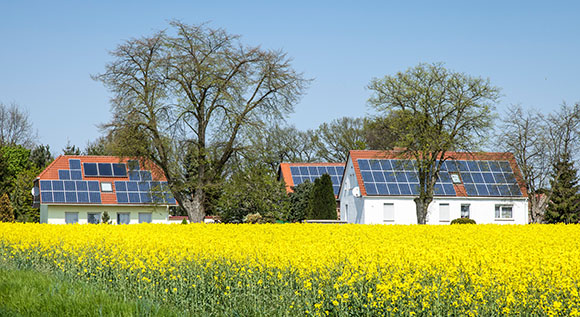How might a smart energy supply of the future be organised?
The competition for funding under the "Smart Energy Showcases - Digital Agenda for the Energy Transition" programme (SINTEG) has really struck a chord. There has been a large number of submissions from seven big consortia representing around 200 companies from all over Germany.
 © BMWi/Holger Vonderlind
© BMWi/Holger Vonderlind
Germany is relying on ever greater shares of wind and solar energy to generate its electricity. However, these sources fluctuate heavily. This is why a number of extensive model regions are to be set up, in which different ways of providing a secure, efficient, and climate-friendly supply of electricity will be developed and tested on a large-scale basis. The Federal Ministry for Economic Affairs and Energy has established a funding programme for this initiative, entitled "Smart Energy Showcases - Digital Agenda for the Energy Transition (SINTEG)", and is currently calling for offers. The aim of the initiative is to develop a smart energy system that balances supply with demand and also uses storage in order to keep the grid balanced.
Smart energy systems based on new information and communication technologies are also to enable consumers to participate in the energy market more easily – whether it is selling electricity that they have produced or using electricity when it is cheapest. These systems are also to foster the development of new products and services, such as those designed to monitor the status of the grid or to stabilise it. These large-scale "showcase regions" have been set up to bundle together the knowledge, experience and activities of different players across the system. The solutions being developed and tested are to serve as a blueprint for an energy system that can be rolled out nationwide.
The SINTEG programme is part of a host of measures entitled "Innovative Digitisation of German Business", making it an essential building block that is serving to help implement the Federal Government’s Digital Agenda.

